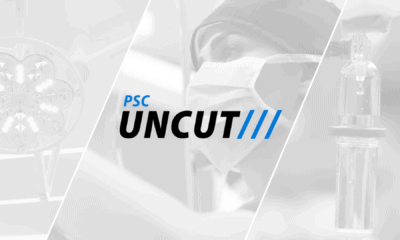As widespread as plastic surgery is, the specialty is used to catching flak. To the untrained eye, plastic surgery looks like a purely aesthetic realm, helping people to enhance their looks or put up some measure of fight against the aging process. And while there is absolutely nothing wrong with these pursuits on their own, many miss out on the fact that plastic surgery treats functional problems as well. Due to this, many seemingly “inappropriate” patients achieved life-changing procedures – notably teenagers.
Plastic surgeons know that holes in the public’s understanding of plastic surgery creates a sort of taboo with younger patients, but this need not be the case. Plastic surgeons are, after all, physicians whose number one priority always is patient safety. Texan board certified plastic surgeons Dr. Ashley Gordon and Dr. Luis Rios detail situations where teenagers are “great” candidates for plastic surgery, showing one of plastic surgery’s most powerful sides oft hidden in social discourse.
Function vs. Aesthetic
The field of modern plastic surgery began as a response to the first World War, as battlefield casualties took a form of gruesomeness never before seen in medicine. Sir Harold Gillies, a New Zealander, pioneered facial reconstruction techniques during this time to help soldiers with remarkably deforming injuries from the onslaught of never-before-seen battlefield weaponry. This is all to say that plastic surgery got it’s start from a reconstructive position. While Sir Gillies and others were doing their best to add a touch of aesthetic benefit to their patients, really they were seeking functional improvement so that soldier’s could go on to lead normal lives.
Plastic surgery has never wavered in it’s reconstructive roots, as traumatic aesthetic and function-destroying injuries are routinely served by reconstructive/plastic surgeon ever since the Great War. It’s aesthetic side – what the modern public generally associates with plastic surgery – is a more recent development, yet still is anchored firmly to reconstructive theory.
Functional Improvement Begins After Puberty
Functional issues affect more than just self-esteem, although that aspect is certainly enough to warrant a procedure. When the body has more or less completed it’s transition from child to adult during puberty, any functional issue that appears after this transformation can be addressed then.
This situation is one that creeps heavily towards the taboos of plastic surgery; namely, the idea of operating on a teenager. Dr. Gordon recently had a teen-aged patient whose situation really tested the limits of taboos, – she was seeking correction of her vagina.
“I recently had a patient who was 16 years old who came in for a labiaplasty consult,” Dr. Gordon shares. “She came in with her mom, who was very supportive, and was just a young girl that had enlarged labia minora. She didn’t want to go out, she couldn’t wear a bathing suit, she couldn’t wear yoga pants, she couldn’t participate in sports. Functionally, it was causing urinary tract infections and hygiene issues. We had a long discussion with her mom, and her dad came to the pre-op. They decided, for her self-esteem, it was really the right thing to do.”
Dr. Gordon describes a functional issue that can be properly addressed with plastic surgery. Her patient’s functional issues included:
- Discomfort participating in sports
- Self-esteem issues surrounding tight-fitting clothes
- a higher incidence of urinary tract infections and hygiene problems
While a labiaplasty procedure is utilized to create a more aesthetically-pleasing vagina, this concern goes hand-in-hand with function. Overly large labia minora can cause all sorts of problems whenever a woman is in a sitting position, causing discomfort and even pain. If large enough, the issue can also make itself known thanks to a trend of tighter-fitting clothing. All of these issues combine to form a real problem for a woman, and the problems grow exponentially for a newly-made woman trying to establish her self-esteem and confidence.
For Dr. Gordon, age is but a number. The real variables are discovered after she consults with and analyzes her patient. Only then can a solution be found, or the decision to not have surgery be made. “It’s not an age thing,” she explains. “It’s really about patient selection and doing the right thing by the patient. Especially at that age, that’s when they’re developing their self-esteem and confidence. It’s an important part of that – to not feel deformed.”
In addition to labiaplasty, breast reduction is a common procedure sought out by some teenagers who received more volume than function can handle. It’s a bad joke that the larger the breasts the better; talk to any woman with overly large breasts and they’ll tell you a number of daily problems this “benefit” causes in their lives. “I’ve also had teenagers with large breasts that have come in for breast reduction,” shares Dr. Rios. “Really these decisions need to be left in the hands of the experts because we are going to find times when teenagers are good candidates for plastic surgery.”
Plastic Surgeons are Physicians Looking to Help Patients
Parents and teenagers shouldn’t fear the idea of surgery if the latter is having serious issue. While the internet has opened a Pandora’s Box of resources and information, it’s not always good information. Additionally, social critiques of certain decisions and media attitudes are not the end-all-be-all. The only legitimate way to answer a question is to consult with an expert, a surgeon who practices surgery to benefit their patients, not cause undo stress.
For many teenagers, plastic surgery may absolutely be the right decision. Ultimately, the only one who can determine a course of action is a surgeon and their patient.











Facebook
Twitter
Instagram
YouTube
RSS